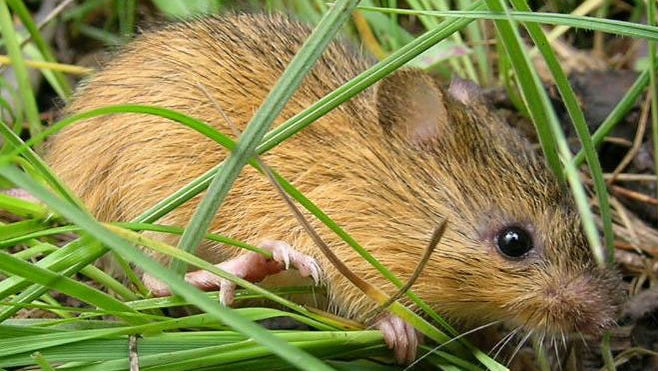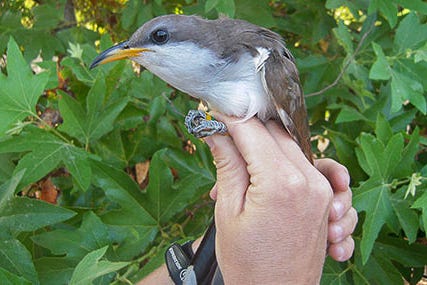
A 15-mile stretch of the Rio Grande in New Mexico was excluded from habitat protections for the western yellow-billed cuckoo to the chagrin of environmentalists.
The U.S. Fish and Wildlife Service (FWS) announced April 21 it had designated 300,000 acres in New Mexico, Arizona, California, Colorado, Idaho, Texas and Utah as protected habitat for the imperiled bird that dwells along riverbeds throughout the West.
The move marked a decline in the designated habitat for the cuckoo in a rule issued in 2014 that set aside about half a million acres but was revised last year.
More:Federal judge orders rare New Mexico fish species could be listed as endangered
The alteration meant more than 8,000 acres of habitat in the Elephant Butte Reservoir along the Rio Grande in southern New Mexico was excluded at the request of the U.S. Bureau of Reclamation based on needed downstream water deliveries to users along the river.
But conservationists argued the Elephant Butte Reservoir contained one of the largest surviving populations of the cuckoo in the U.S. and would likely improve in the southern portion of the reservoir while the northern section appeared on the decline.
Jen Pelz, wild rivers program director at Santa Fe-based WildEarth Guardians said the reduction in protected acreage could not only threaten cuckoo populations but worsen conditions along western rivers like the Rio Grande.
More:Rio’s recovery: Endangered species listing for rare New Mexico fish
“River ecosystems are some of the most imperiled systems in the West,” Pelz said. “It’s disappointing that the cuckoo didn’t receive the broad habitat protections it deserves and that are necessary to ensure living rivers and healthy riparian floodplain environments.”
The western yellow-billed cuckoo’s historic range is distinguished from its eastern counterpart by the Rocky Mountains and its river systems.
It was listed as threatened by the FWS in 2014, and once known to breed in massive numbers west of the Continental Divide from British Columbia, Canada into New Mexico, per the National Park Service, with its distinct population segment (DPS) boundary continuing into Mexico.
More:‘It’s our place to take care of them’: New Mexico landowners fight to save lesser prairie chicken

The bird no longer occupies most of its historic range but breeds in scattered river areas in New Mexico, Arizona and California, per a report from the Park Service. The FWS reported the only remaining strongholds for the bird are in New Mexico and Arizona along larger river areas.
The declining population was caused by development, groundwater pumping, agriculture and invasive species, the report read, along with climate change.
“The loss and degradation of native riparian habitat throughout the western yellow-billed cuckoo’s range have played a major role in the bird’s decline,” read the report. “The warmer temperatures already occurring in the southwestern United States may alter the plant species composition of riparian forests over time.”
More:Conservationists renew push to save New Mexico lesser prairie chicken. Feds to decide by May
Aside from Elephant Butte, the recent designation also excluded about 82,138 acres on 150-mile section of the Colorado River in California and Arizona, along with 23,589 acres near Topock March in those same states and 3,137 acres near Grand Junction, Colorado.
Pelz said several important habitat areas were ignored in the recent ruling and that the Service should prioritize saving the western yellow-billed cuckoo over the agendas of local water managers.
“It’s shocking, given the severe impacts of climate change on river ecosystems, that many important habitat areas within reservoirs were excluded from the critical habitat designation by the Service,” she said. “Unless and until floodplain habitat along rivers is restored, the Service has an obligation to include in protections the habitat cuckoos are utilizing even if potentially problematic for water managers.”
More:A butterfly’s last stand: Federal listing sought for rare species in Sacramento Mountains
In the decision filed by the FWS in the Federal Register, the agency said the revised designation excluded about 194,820 acres that did not meet the physical or biological criteria for critical habitat by being either uninhabited by the cuckoo or not containing features the needed by the species.
Many of the areas exclude also already had local conservation plans for the bird underway, and the FWS determined additional federal action was not needed.
In total, the FWS selected 63 land units for breeding grounds to restore the bird’s populations after receiving comments on the proposed rule from environmental groups, government agencies and others.
More:Fighting for a fish: Saving the peppered chub could restore a river in northeast New Mexico
Units in New Mexico included segments of the San Francisco River in Catron County, the Gila and Mimbres rivers in Grant County, the Upper Rio Grande in Rio Arriba County, and the Middle Rio Grande in Sierra, Socorro, Valencia, Bernalillo and Sandoval counties.
The FWS also designated areas of the Upper Gila River in Hidalgo and Grant counties.
“This final designation of critical habitat identifies areas that we have determined, based on the best scientific and commercial information available, are essential to the conservation of the species or otherwise essential for its conservation,” the ruling read.
“Some of the areas removed did not contain the physical or biological features or meet our criteria for critical habitat for the western yellow-billed cuckoo and were identified based on comments or additional review.”
More:The mighty mollusk: Feds propose plan to restore Texas hornshell mussel in New Mexico
Exclusions based on human water users were unacceptable, Pelz said, as continued use of the rivers could lead to further habitat fragmentation and potential extinction for the yellow-billed cuckoo.
“The demise of the cuckoo is at the hands of the same water managers and users the Service here appears to be seeking to protect,” she said. “It’s time the Service began upholding its mandate under the Endangered Species Act to ensure the recovery of the species and stop protecting the status quo.”
Adrian Hedden can be reached at 575-618-7631, achedden@currentargus.com or @AdrianHedden on Twitter.






